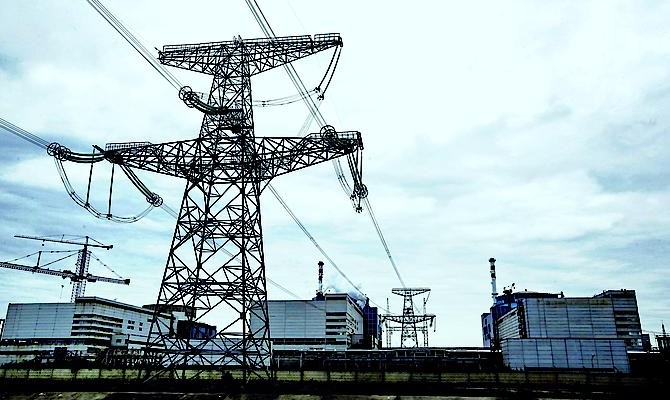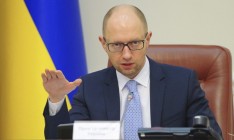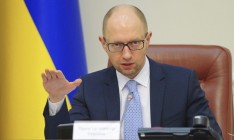Business
PlansThe premier’s projects in the national nuclear power industry are expensive and meaningless

The crisis in the thermal energy sector is forcing the Ukrainian government to develop nuclear power. Premier Arseniy Yatsenyuk promised to finish the construction of two units at the Khmelnytskiy NPP by 2020 and increase the capacity of existing and operating plants by 2016. Despite this, the terms are too short and it is still unclear where the money for these projects will come from.
Construction of the century
Ukraine will complete the construction of the No. 3 and No. 4 units at the Khmelnytskiy Nuclear Power Plant (KNPP) in 2020. This provision is contained in the Cabinet’s action plan approved yesterday. Presenting the plan, Yatsenyuk mentioned even a tighter schedule – 2018.
However, Director of Information and Public Relations of the Ukrainian Nuclear Forum Association Olha Kosharna believes the construction of the two units at the KNPP by the deadline is not realistic. “In order to meet the deadline, construction must start in 2015, but there is still no contract, no blueprint and no feasibility studies. Moreover, we have no idea with whom we will complete the construction of these units,” she said.
Borys Kostyukovskiy, a leading research officer at the Department of Optimization of Fuel and Energy Complex of the Institute of General Energy under the National Academy of Sciences of Ukraine, agrees with Kosharna. “Getting all the necessary technical approvals and approval of the Verkhovna Rada, local authorities and the public will take approximately two years,” he said. The expert also noted that before discussing the issue of commissioning of the units, Ukraine must decide on the technologies it will use to complete their construction.
Currently, Energoatom is considering the possibility of completion of units at the Khmelnytskiy NPP in cooperation with the U.S. company Westinghouse and the Czech company Skoda JS a.s. But thus far no final decision has been made on the choice of technology that will be issued in the form of a regulatory document, which also takes some time.
Skoda’s participation in the project suggests that for completion of the units the company may use the Russian model of reactor and the existing structures built precisely for the Russian power unit model. However, Kostyukovskiy doubts that this option is feasible. “The Czechs have some opportunities to implement it, but there is also Russia’s financial interest. Part of the money spent on construction of the Russian model of the unit could be transferred to Russians as royalty. And then we will be accused of financing Russia!” he said.
Why do we need that many?
The Cabinet of Ministers gave specific dates for completion of the units, though the current situation in the energy sector is not quite clear. Kostyukovskiy noted that given the current level of energy consumption and the forecast for the coming years, there is the issue of expediency of construction of new generating capacities. “I think that by 2025–2030, given the current decline in industrial production and reduction of power consumption, there will be no need for new capacities in the energy sector. If the consumption infrastructure loses the Donbas, where a large number of enterprises consume the base load produced by NPPs, the surplus of capacities will be even higher,” confirmed the expert.
At the same time, Kostyukovskiy pointed out the performance aspect of construction of the new capacities at NPPs: the plants work in the basic mode, generating the same level of power output during the day. Therefore, it will be even harder to regulate the load curve in the power system during the day with its morning and evening peaks and the decrease in consumption during the night hours with the installment of new units.
The financial aspect is also important. While construction of the new units will most likely be financed through loans, paying them back could become a problem in the event of low demand for electricity.
Where is the money from?
In addition to the construction of the new units the Cabinet plans to increase the supply of electricity from the currently operating units to 3.3 GW in 2016. Yatsenyuk hopes to implement the project in a shorter period of time – by 2015.
However, this also raises questions among experts. 1 GW could be additionally supplied with the help of completion of construction of a power transmission line connecting the Rivne and Khmelnytskiy NPPs with the Kyiv substation. Another 0.7 GW may come through construction of the power transmission line between the Zaporizhzhya NPP and the Khakhovka substation. The increase of capacity by the remaining gigawatt can be achieved by upgrading the electrical part of the NPP. “Capacity of the VVER-440 unit could be increased by 40 MW and capacity of the VVER-1000 – by 80 MW.
This is precisely what Finland and the U.S. did, thereby gaining 21 GW of additional capacity after modernization of almost 100 of their units,” said Kosharna. She added that Energoatom had a program for improving the capacity of the existing units, but its implementation requires money. But now the company does not fully receive even those amounts owed for electricity sold on the energy market. “The energy market’s debt to Energoatom has already reached UAH 3 bn this year alone. Therefore, it will be virtually impossible to finance the program and increase the capacity of the operating units in 2015 given such low payment discipline,” believes the expert.
Kostyukovskiy is convinced that if the project for construction of the power transmission line is implemented, which will increase the power output from the Zaporizhzhia and the Rivne NPPs, the need for the construction of new units will not be so urgent.






 of the agreement of syndication with Financial Times Limited are strictly prohibited. Use of materials which refers to France-Presse, Reuters, Interfax-Ukraine, Ukrainian News, UNIAN agencies is strictly prohibited. Materials marked
of the agreement of syndication with Financial Times Limited are strictly prohibited. Use of materials which refers to France-Presse, Reuters, Interfax-Ukraine, Ukrainian News, UNIAN agencies is strictly prohibited. Materials marked  are published as advertisements.
are published as advertisements.